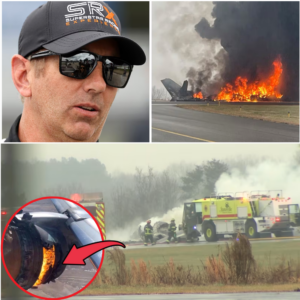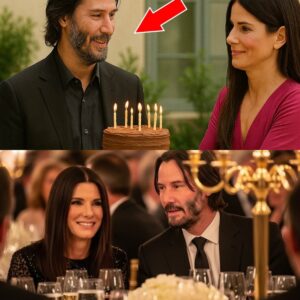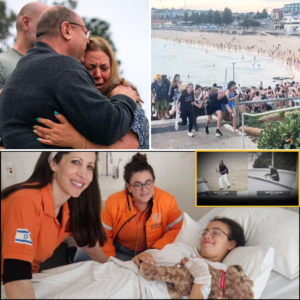On August 8, 2025, a tragic shooting at the U.S. Centers for Disease Control and Prevention (CDC) headquarters in Atlanta, Georgia, left a community in mourning and reignited debates about mental health, gun access, and the dangers of vaccine misinformation. Patrick Joseph White, a 30-year-old resident of Kennesaw, Georgia, opened fire on the CDC campus, killing DeKalb County Police Officer David Rose, 33, and targeting at least four buildings with over 180 rounds of gunfire. White, who died of a self-inflicted gunshot wound, had a documented history of mental health struggles and blamed the COVID-19 vaccine for his depression and suicidal thoughts, according to authorities and recovered documents. In the aftermath, the American Federation of Government Employees, Local 2883, representing CDC workers, issued a forceful demand for federal officials to condemn vaccine misinformation, citing its role in fueling the attack and endangering scientists. This incident, marked by its complexity and far-reaching implications, underscores the urgent need to address misinformation, mental health crises, and workplace safety at one of America’s premier public health institutions.
The Attack: A Violent Assault on a Public Health Institution
The shooting unfolded late Friday afternoon, just before 5 p.m., when Patrick Joseph White attempted to enter the CDC’s Atlanta headquarters but was stopped by security guards. Undeterred, he drove to a nearby CVS pharmacy across the street and began firing from the sidewalk, unleashing a barrage of bullets that pierced “blast-resistant” windows across the sprawling CDC campus. According to the Georgia Bureau of Investigation (GBI), at least four buildings were struck, with some reports indicating up to six, and over 500 shell casings were recovered from the scene, evidencing the scale of the attack.
DeKalb County Police Officer David Rose, a 33-year-old former Marine who had served in Afghanistan, was among the first responders. Rose, who had graduated from the police academy in March 2025 and joined the DeKalb County Police Department shortly thereafter, was fatally wounded while confronting the threat. His death sent shockwaves through the community, with tributes pouring in for a man described as a dedicated public servant. A makeshift memorial, adorned with flowers and messages, emerged outside the CDC campus, symbolizing the collective grief of Atlanta residents and law enforcement colleagues.
White was found dead on the second floor of a building across from the CDC campus, having sustained a self-inflicted gunshot wound, according to GBI Director Chris Hosey. The Atlanta Police Chief, Darin Schierbaum, noted uncertainty about whether White’s death resulted from police action or was entirely self-inflicted, highlighting the complexity of the crime scene. The GBI described the investigation as “complex” and anticipated it would take an extended period to fully unravel the sequence of events.
The attack’s immediate impact was profound: CDC employees, including researchers working on critical disease prevention, were forced to huddle in buildings for safety, some until late at night. More than 90 young children at the CDC’s Clifton School, an on-campus childcare facility, were locked down during the ordeal, amplifying the trauma experienced by staff and their families. The physical damage—bullet holes in windows and doors, including at the nearby CVS—served as a stark reminder of the violence that had erupted in a place dedicated to public health.
The Suspect: Patrick Joseph White’s Mental Health Struggles
Patrick Joseph White, a 30-year-old from Kennesaw, had no prior criminal history but was known to law enforcement due to multiple reports of suicidal ideation over the past year. According to Fox Atlanta, police were called to White’s residence three times in 2024—April, July, and September—following concerns about his mental state. In at least one instance, White’s father reported that his son had accessed a firearm from his gun locker, describing it as a “cry for help.” During the September 2024 call, White explicitly linked his declining health to the COVID-19 vaccine, claiming it exacerbated chronic pain from a back surgery a decade earlier and contributed to his depression and suicidal thoughts.
Despite being transported to Kennestone Hospital for evaluation after the September incident, White refused mental health treatment on subsequent occasions, raising questions about the effectiveness of existing intervention protocols. GBI Director Hosey confirmed that investigators were coordinating with local law enforcement to gather details about these prior contacts, aiming to identify missed opportunities for intervention. White’s struggles, combined with his access to firearms, created a volatile situation that culminated in the deadly attack.
The Weapons: Unauthorized Access to Firearms
Authorities recovered five firearms, primarily long guns, from the crime scene, along with over 500 shell casings, indicating a heavily armed assault. White obtained these weapons by breaking into his father’s gun safe, which was described as secure and inaccessible without forced entry. “He did not have a key to the safe. He broke into it,” Hosey stated during a press briefing, emphasizing that the firearms were not readily available to White. This breach raised significant concerns about gun storage safety, particularly for individuals with known mental health issues.
White’s father played a critical role in the investigation, contacting police to identify his son as the potential shooter. He also revealed that White had been deeply upset over the death of his dog, a personal loss that may have compounded his mental health struggles and fixation on the COVID-19 vaccine. The combination of emotional distress and access to a substantial arsenal enabled White to carry out an attack of unprecedented scale against a federal facility.
Motivation: Vaccine Misinformation and a Personal Manifesto
A search of White’s residence uncovered documents described as a “personal manifesto,” expressing his discontent with COVID-19 vaccines. While the writings did not contain direct threats, they articulated a desire to “make the public aware” of his belief that the vaccines were harmful. White’s father and a neighbor, Nancy Hoalst, corroborated this fixation, with Hoalst telling The Atlanta Journal-Constitution that White “very deeply believed that vaccines hurt him and were hurting other people.” She described him as a “good guy” who appeared unsettled but not overtly violent, expressing shock that he would target the CDC.
White’s belief that the COVID-19 vaccine caused his depression aligns with a broader narrative within anti-vaccine communities, where unsubstantiated claims about vaccine side effects have fueled distrust in public health institutions. The CDC, as a leading authority on vaccination campaigns, has been a frequent target of such sentiments since the pandemic began. Public health officials have consistently emphasized the safety and efficacy of COVID-19 vaccines, supported by extensive clinical trials, but misinformation continues to spread, often amplified by social media and fringe platforms.
The union representing CDC employees, the American Federation of Government Employees, Local 2883, described the shooting as “deliberate” and linked it to a “climate of hostility and mistrust” fueled by vaccine misinformation. The union’s statement highlighted the “mistreatment, neglect, and vilification” endured by CDC staff, pointing to the broader impact of anti-vaccine rhetoric on public health workers. They demanded that the CDC and the Department of Health and Human Services (HHS) issue a “clear and unequivocal stance” condemning vaccine disinformation to protect scientists and restore public trust.
Union Response: A Call for Action and Security
The union’s response was swift and unequivocal, emphasizing the need for immediate action to address both the physical and psychological aftermath of the shooting. They argued that CDC staff should not be required to return to work until all damaged buildings are repaired and deemed “completely secure.” “Staff should not be required to work next to bullet holes,” the union stated, warning that forcing a premature return risks re-traumatizing employees. They also called for enhanced perimeter security across all CDC campuses until the investigation is complete and results are shared with staff.
Additionally, the union criticized HHS Secretary Robert F. Kennedy Jr., accusing him of contributing to the vilification of CDC workers through “continuous lies about science and vaccine safety.” Kennedy, a vocal vaccine skeptic, has recently made headlines by canceling $500 million in mRNA vaccine development contracts and announcing that the CDC would no longer recommend COVID-19 vaccines for healthy children or pregnant individuals, citing concerns about their effectiveness against respiratory infections. These claims have been met with skepticism from the scientific community, which points to rigorous evidence supporting vaccine safety.
Kennedy responded to the shooting by condemning the violence and expressing support for CDC staff, stating, “No one should face violence while working to protect the health of others.” HHS Communications Director Andrew Nixon echoed this sentiment, affirming Kennedy’s commitment to employee safety and honoring Officer Rose’s sacrifice. However, the union and a group of laid-off CDC employees, Fired But Fighting, argued that Kennedy’s rhetoric has exacerbated tensions, creating an environment where attacks like White’s are more likely.
Addressing the Discrepancy: A Note on Conflicting Reports
A single report from DISA.org identified the shooter as Charles Lawson, a 42-year-old former CDC employee, and dated the incident to April 11, 2024. This account conflicts with all other sources, which consistently name Patrick Joseph White and place the event on August 8, 2025. Given the lack of corroboration and the alignment of other reports, the Lawson reference appears to be erroneous or related to a separate incident. This discrepancy highlights the importance of verifying information, especially in the context of misinformation-driven events like this shooting.
Broader Implications: Misinformation and Public Health
The CDC shooting underscores the devastating consequences of vaccine misinformation, which not only undermines public health efforts but also puts scientists and public servants at risk. The union’s call for a proactive stance against false narratives reflects a broader need for public health agencies to combat misinformation through education, collaboration with social media platforms, and partnerships with community leaders. The CDC has pledged to enhance its communication strategies, emphasizing media literacy and the importance of credible sources.
The incident also highlights systemic challenges in addressing mental health crises. White’s repeated refusals of treatment and his ability to access firearms despite known suicidal ideation point to gaps in mental health intervention and gun safety protocols. Advocates argue for better integration of mental health services with law enforcement responses and stricter measures to secure firearms in households with at-risk individuals.
Community Impact and Moving Forward
The loss of Officer David Rose, a veteran and recent police academy graduate, has left a profound mark on Atlanta. His memorial, filled with flowers and tributes, serves as a testament to his dedication and sacrifice. For CDC employees, the trauma of the attack—compounded by months of harassment and vilification—will require ongoing support, including flexible work options and counseling services.
As the GBI continues its investigation, the focus remains on understanding White’s motivations and preventing future attacks. The FBI’s involvement in analyzing his writings signals a commitment to addressing the ideological factors at play. For the CDC, strengthening campus security and rebuilding public trust are paramount, particularly in an era where misinformation can have deadly consequences.
In conclusion, the August 8, 2025, shooting at the CDC headquarters was a tragic convergence of mental health struggles, unchecked access to firearms, and vaccine misinformation. Patrick Joseph White’s actions, driven by his belief that the COVID-19 vaccine caused his depression, resulted in the death of a heroic officer and widespread fear among CDC staff. The union’s demand for action against misinformation and enhanced security reflects the urgent need to protect public health workers and counter false narratives. As Atlanta mourns and the nation reflects, this incident serves as a call to address the root causes of such violence, from mental health support to combating misinformation, to ensure a safer future for all.





